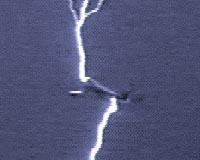 |
Taoyuan, Taiwan (AFP) June 2, 2009 Fork-lift trucks are buzzing around a terminal of Taiwan's first free trade zone despite the global economic crisis that has seen shipments from ports elsewhere on the island tumble. Farglory, the company that operates the bonded zone outside the northern city of Taoyuan, says the economic downturn is a crisis in theory only here, as business just keeps getting better. "Companies at the zone have not felt the pinch of the global economic crisis. Their revenues keep growing," said Yeh Chun-yao, chairman of Farglory Free Trade Zone Holding Co. Taiwan, the sixth biggest economy in Asia, has been hit hard by the global financial crisis. April exports fell 34.3 percent year-on-year to 14.85 billion US dollars, the eighth consecutive monthly decline. But as the island suffers generally, the free trade zone, which occupies 45 hectares (111.15 acres) next to Taoyuan's airport, has attracted around 20 international enterprises and 40 local firms. Among the latest players to relocate here is the local branch of courier giant DHL Express. The enclave and the airport have been labelled the "egg yolk" at the heart of a "fried-egg theory" proposed by the transport ministry as the government aims to build the area into an "aerotropolis" -- that is, a centre for all things associated with aviation -- as well as a regional hub. The idea of transforming Taiwan into a regional transportation hub dates back to the mid-1990s when the nationalist Kuomintang (KMT) government launched massive investment projects in the midst of a booming economy. But time ran out to make good on those ambitions, which included dreams of becoming a banking, telecommunications and media centre, when the KMT lost the 2000 presidential polls to the pro-independence Democratic Progressive Party (DPP), ending its 51-year grip on power. The DPP, under then president Chen Shui-bian, scrapped many of the projects here during its eight years in office. But with the KMT's return to power last year, President Ma Ying-jeou has put the zone back on his list of priorities as he focuses on improving ties with former arch rival China and boosting the island's faltering economy. "Previously, the root cause of the related problems was the lack of direct transportation links" between Taiwan and China, just across the Taiwan Strait, said Taoyuan county magistrate Eric Chu. "Now the barriers have been removed after the Ma administration was inaugurated," said Chu, also a vice chairman of the KMT, referring to talks that have led to direct flights and deepened economic ties across the Strait. Taoyuan's free trade zone is slated for enlargement to 290 hectares in response to the cross-Strait flights and rising demand for air cargo in the Asia-Pacific region, according to the blueprint laid out for the future aerotropolis. The government plans to spend nearly 500 billion Taiwan dollars (15.2 billion US) to upgrade infrastructure over the next four years, with half that amount going to aerotropolis-related projects, including a rail system linking the airport to the island's capital Taipei. A third terminal will be added to the airport and the existing terminals, which have operated for 30 years, will be upgraded. The KMT has also pushed for the passage of a bill allowing professionals, rather than government employees, to run the airport. "The red tape that has been reducing the airport's operating efficiency must be got rid of if we want to ensure the success of the projects," Chu said. To take advantage of the dramatic changes, the aerotropolis planners have expanded on their original plans, adding a trade exhibition complex, aircraft repair and maintenance services and a recreation area to counter competition from Chinese cities. Chu said he hopes the project will attract one trillion Taiwan dollars worth of private investment and create up to 80,000 jobs. Share This Article With Planet Earth
Related Links Aerospace News at SpaceMart.com
 Lightning bolts a risk for modern jets
Lightning bolts a risk for modern jetsParis (AFP) June 2, 2009 Passenger jets are hit by lightning every 1,000 hours -- on average twice a year -- and experts say the risk from the bolts of electricity is growing. But technical experts, astounded like everyone else by the disappearance of an Air France jet in the Atlantic with the feared loss of 228 lives, say lightning alone could not have caused it to crash into the ocean. Air France has said the ... read more |
|
| The content herein, unless otherwise known to be public domain, are Copyright 1995-2009 - SpaceDaily. AFP and UPI Wire Stories are copyright Agence France-Presse and United Press International. ESA Portal Reports are copyright European Space Agency. All NASA sourced material is public domain. Additional copyrights may apply in whole or part to other bona fide parties. Advertising does not imply endorsement,agreement or approval of any opinions, statements or information provided by SpaceDaily on any Web page published or hosted by SpaceDaily. Privacy Statement |